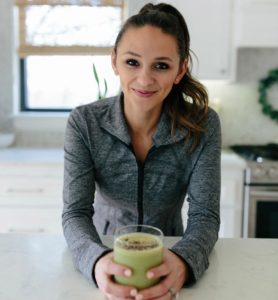It may sound obvious, but nutrition is a critical component of athletic performance. And, according to noted dietitian Angie Asche MS, RD, LMNT of Eleat Sports Nutrition, who has educated athletes on sports nutrition for years, the needs vary greatly not just by sport, but by position, goals, body type and other factors.
Asche took some time to discuss the connection between sound nutrition and performance in highly competitive athletes.

SportsMD: What is the biggest misconception among athletes about how nutrition affects their performance?
Angie Asche: That supplements can replace a poor diet. With increased training comes higher micronutrient needs, so in many cases supplementation is necessary for athletes. However, the misconception I run into often is the belief in simply taking a daily multivitamin or a ‘greens’ powder to make up for an overall poor diet. If the diet is lacking in whole foods, vegetables, fruit, whole grains, legumes, omega-3 rich fatty acids, the chances are very slim that one powder or one multivitamin will equate to the bioavailability of nutrients and antioxidants in these foods.
SMD: Would you say that most of your clients need a significant change to their diet, or do they generally come in with a good base line to start?
AA: I think it completely depends on their previous level of education, whether they’ve had the opportunity to meet with a university sports dietitian throughout college, or a team dietitian, to help educate them on the basics of sports nutrition. Professional athletes generally have an overall good diet, they may just be lacking in specific nutrients and need a dietitian to help analyze their diet – whether that’s observing dietary recalls or in some cases receiving micronutrient blood testing. The most common micronutrient deficiencies or inadequate intakes I see are vitamin D, magnesium, and omega-3 fatty acids.
SMD: What foods do you recommend to most of your clients, if there is one?
AA: Vegetables, this is the category I see athletes struggle with the most. Another issue I see is the lack of overall variety in plant foods. More times than not an athlete may only eat 2-3 different kinds of vegetables (ex: spinach, broccoli, and green beans) so I try to find ways to diversify the plant foods they’re eating. The wider range of plants we eat, the more diverse the bacteria in our guts will be, creating an overall healthier gut microbiome. I try to find ways to add in new vegetables or fruit they’ve never tried before, or if they don’t think they like a vegetable but haven’t actually had it in 10+ years, I recommend new ways of preparing it that align well with the foods they do enjoy.
SMD: What are some of the factors that you use in determining the proper plan for a particular athlete?
AA: I meet with the athlete several times before actually creating a nutrition plan for them. It’s very important for me to have baseline measurements, body composition, knowledge of their sport/position, training regimen, and a background on their health, diet, and weight history. However, what’s even more important to me is building a relationship with the athlete, understanding their eating habits, what motivates them, how I can get them to buy into the fact what they’re putting in their body has a direct impact on their performance. Once I get to know the athlete personally, I’m able to determine the proper plan moving forward.
 SMD: What would be the difference for you in working with a baseball player as opposed to a basketball, football, or hockey player, for example.
SMD: What would be the difference for you in working with a baseball player as opposed to a basketball, football, or hockey player, for example.
AA: Honestly, there are so many differences even within those sports depending on their position, their personal goals, and what part of their season they’re in. For example, a starting pitcher burns significantly more calories than an outfielder, but also only starts once every five days. In football, a cornerback and a defensive tackle both play defense, but have very different body sizes and composition, making calorie requirements extremely variable depending on the player. No matter what sport the athlete competes in, I work with them individually to determine the best actions to take from a nutrition standpoint pre, during, and post-game. We walk through hydration needs which are based on their specific sweat rate, and how to meet their nutrient needs based on their surroundings and what’s provided to them at the field.
SMD: Without naming one specifically, is there a professional athlete with whom you have worked who has made the most measurable gains?
AA: Well the athlete who had to make the most dramatic changes to his diet is an MLB pitcher who suffered from ulcerative colitis and had to undergo a J-pouch procedure. By the end of his third surgery, he had lost a significant amount of weight and was limited as to what foods he could tolerate. We spent that year introducing one new food at a time, paying close attention to ingredients to find out what caused discomfort. For example, it’s very common for athletes to drink sports drinks as a quick and easy way to replenish carbohydrates and electrolytes. However, we learned very quickly that citric acid caused him pain and discomfort…and that it’s in just about every type of sports drinks and in a lot more foods than you would imagine. This made replenishing his electrolytes mid-game a little bit more challenging, but we were able to find electrolyte products free of citric acid that he tolerated well. To promote weight gain, I slowly increased his calories each week rather than making a large jump in both calories and volume from what he was currently eating. This way, the portions of the meals never seemed to overwhelm him or cause discomfort. By the end of the off season, he had regained all the weight he lost and was back pitching in MLB.
I’ve helped several athletes reach their body composition/weight goals and make measurable gains. A few examples include:
- MLB infielder who dropped 30 lbs.
- D1 NCAA pitcher who gained 20 lbs., ended up getting drafted in the first round of the MLB draft
- NFL defensive tackle who reached a body composition goal (lost over 7%) he had been trying to achieve for years
SMD: How receptive are pro athletes to making radical diet changes?
AA: For the most part the athletes I work with are all very receptive, and open to suggestions when it comes to their diet. This is one of the many reasons I love working in private practice. Athletes reach out to me on their own terms, because they feel I can provide them tools to increase their overall health/performance.
Learn more about Angie and Eleat Sports Nutrition here.
Cover Image: Unsplash/Alexandr Podvalny
